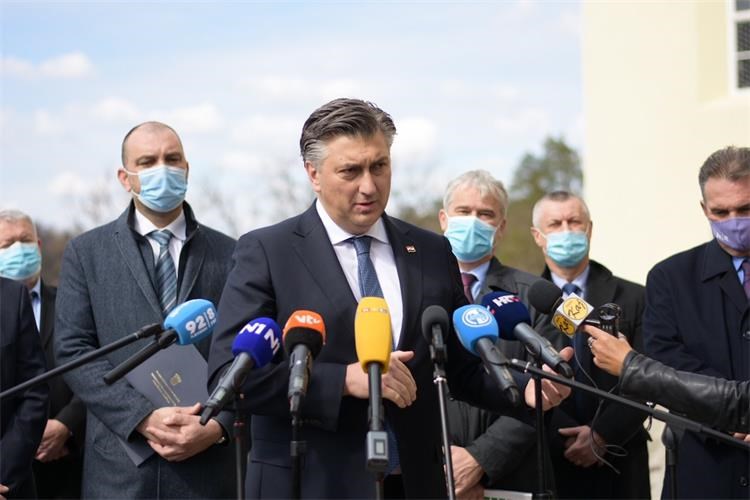


The Standard & Poor's agency has affirmed its 'BBB-" credit rating on Croatia, with the stable outlook, the government stated earlier on Tuesday.
The credit agency's report says that Croatia's stable political climate and plans to enter the euro area are conducive to reform efforts. The agency projects a general government deficit of 2.9% of GDP in 2021. It also expects Croatia's debt to resume falling and go below 80% of GDP until the end of 2024.
During his visit to Varaždin County, Plenković said that he found it interesting that the credit agency, the EC and some other analyses show that they are aware how much his cabinet had done in the first stage of its term, that is before the COVID-19 pandemic.
In this context he pointed to "a sound and responsible management of the public finances" and the rapid curtailment of the debt.
Plenković also underscored that last July, Croatia entered the European Exchange Rate Mechanism II.
Asked by the press about the latest statement from the Croatian Employers' Association (HUP) that employers were not engaged in the elaboration of Croatia's National Plan for Recovery and Resilience (NPOO), Plenković said that the purpose of the plan is to make use of the 6.3 billion euros of non-repayable grants and after that an additional 3.5 billion euros will be at the disposal through loans.
In the period between those two steps we will focus on the preparation of the new multi-annual financial framework where 12.7 billion euros awaits us, Plenković said, adding that in the end a sum f 30 billion euros wll be available in the next ten years.
Commenting on all those amounts, Plenković said that "this is a true lever for the economic growth and investments as well as for making the economy more resilient."
When it comes to the structure and speculations about how much could be funnelled to the private sector, Plenković said that about 95% of those 6.3 billion euros would end up in the private sector either directly or indirectly.
We are working on the national recovery and resilience plan that has to satisfy three components: 37% of green transition, 20% of digital transition and to make sure that those projects will not be detrimental to some other criteria of the Green Deal, the premier said and announced the presentation of the draft plan for next week.
Text: Hina